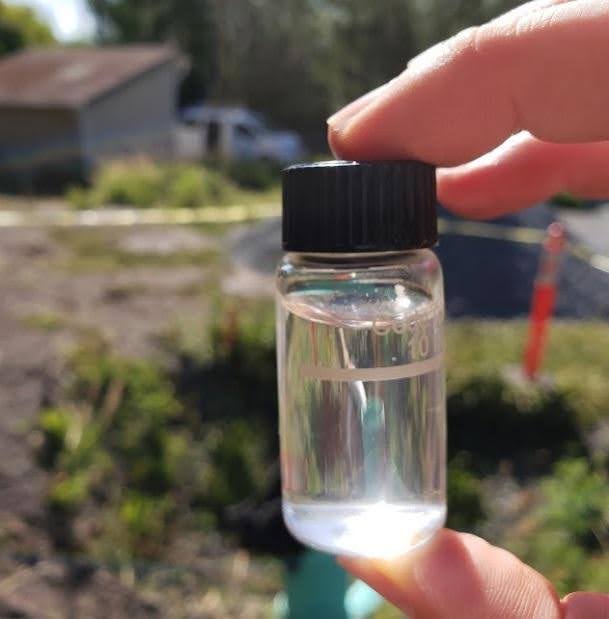Water Quality Monitoring
In Situ and Ex Situ Monitoring
One key question for any Water Quality Monitoring is how you are going to measure your parameter of interest. In general, you may hear the terms “in situ monitoring” or “ex situ monitoring”.
In situ monitoring is the real-time testing of water quality on site. Commonly, this may include parameters like temperature, pH, biological oxygen demand (BOD), turbidity, salinity, or conductivity. Many other parameters can be measured in situ – and happily, this list continues to grow with advancements in field instrumentation.
In situ sampling may be set up as a single “grab sample” when someone is personally on site with measurement devices, or may be established as a long-term program with automated software installed in the water, logging results at specified intervals. Automated data logging is becoming increasingly powerful and cost-efficient, particularly with advancements in remote data access.

Ex situ Water Quality Monitoring refers to the collection of field samples that must be analysed in a laboratory. This commonly includes parameters like chemical contaminants, metals, and total suspended sediment. Environmental dDNA (eDNA) is also an increasingly used laboratory tool used for detecting the presence or absence (but not abundance) of some species of interest.
PGL has long-term work relationships with most of the accredited analytical laboratories in Canada. Because of the volume of work we offer these labs, we are able to negotiate competitive rates that we can pass along to our clients.
Depending on the specifics of your Water Quality Monitoring requirements, there are varying sampling protocols required for in situ or ex situ results to be credible to regulators or other reviewers. We will take any such requirements into account when designing a Water Quality Monitoring program for you.
Putting Measurements in Context
A second key question is how you will attach meaning to the parameter of interest once you measure it. Presumably, any Water Quality Monitoring program is attached to some sort of objectives. Defining water quality objectives is not always a straightforward task!
As a starting point, there are provincial and/or federal Water Quality Guidelines for many parameters of interest. These publications define ambient water quality guidelines that differ depending on the context of the water being sampled – for instance, drinking water, aquatic life, wildlife, livestock, or irrigation.
Guidelines, however, are just guidelines. They don’t always tell the whole story. Perhaps there is a situation where water quality naturally exceeds existing guidelines. In this case, there may be a “non degradation objective”, where the objective is simply to maintain status quo. Water Quality Monitoring should also consider indigenous or other local perspectives where relevant: existing water quality guidelines assume a certain tolerance for risk that might not reflect the tolerance of those who attach value to the water.

As with any sampling program in a real-world setting, there is some variance from sample to sample. Discerning a real trend from natural variance can be a challenge, and is the realm of statistical study design. There is a classic trade-off between budget constraints (fewer samples) and confidence in the results (many samples). It is important to consider this context of your Water Quality Monitoring program in the early scoping stages.
PGL’s staff can help with all of this – not only with developing technically credible programs, but also with communicating the technical, regulatory, and cultural considerations in plain language.
Applications of Water Quality Monitoring
Water Quality Monitoring comes in diverse shapes and sizes. If you are looking for a Qualified Environmental Professional to help set up or interpret a monitoring program, it could include one or more of the following applications:
- Baseline studies: most major development projects are required to complete an Environmental Impact Assessment (EIA), for which reliable baseline studies must be prepared.
- Community Based Monitoring: a growing field of Water Quality Monitoring, often initiated by First Nations or by local stewardship groups. Community Based Monitoring tends to focus on cumulative effects of development pressure on watershed health.
- Construction de-watering and/or Erosion and Sediment Control Plan Monitoring: Construction projects requiring excavation below the groundwater table required some means to pump, treat, and discharge water. Water quality monitoring tends to focus on turbidity, total suspended solid, and pH at minimum, but may include other contaminants of concern depending on the project specifics. Even for projects working at grade, overland flow that discharges to the storm sewer may become sediment-laden, and must meet relevant regulatory standards.
- Ecological Risk Assessment: Water Quality Monitoring is integral for most Ecological Risk Assessments.
- Effluent or waste water discharge: PGL can provide permitting support, calculation of the initial dilution zone, and environmental compliance monitoring to ensure that any “contact” water meets permissible criteria before being discharged back to the environment.
- Environmental Effects Monitoring (EEM): This may be an open-ended topic scoped to, for instance, a hydroelectric project, or may adopt the highly prescriptive monitoring criteria for quartz mines under the Metal and Diamond Mining Effluent Regulations.
What about application topics starting with letters F through Z?
Call us to find out!